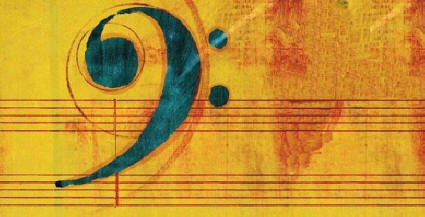|  Note: As you are reading, you may notice that some of the vocabulary associated with Schenkerian analysis is in German. It would be a great idea to start a short glossary. That way all of the German words that start with a "U" will not confuse you as you learn their definitions. Note: As you are reading, you may notice that some of the vocabulary associated with Schenkerian analysis is in German. It would be a great idea to start a short glossary. That way all of the German words that start with a "U" will not confuse you as you learn their definitions. First, take a read through the Oxford Music Online article about Heinrich Schenker If this link does not work for you, go to the database list on the Tarleton library web page, Oxford Music Online, and search for Heinrich Schenker  Second, follow this link to learn more about this form of analysis. You have to scroll about halfway down the page to the paragraph that begins with "In 1906 Heinrich Schenker had published . . ." You can stop reading when the topic shifts to Schoenberg. Analysis History If this link does not work for you, go to the database list on the Tarleton library web page, Oxford Music Online, and search for Heinrich Schenker Also read this explanation of Schenkerian analysis Shhhhhhhh  - I know it's Wikipedia, but it is a pretty good concise overview! - I know it's Wikipedia, but it is a pretty good concise overview! Third, let's be clear that there is no way  we can cover Schenkerian analysis in 1 or 2 weeks. Our objective here is to scratch the surface of this form of analysis and to add to our consciousness a new way of looking at, listening to, learning, and teaching a piece of music. we can cover Schenkerian analysis in 1 or 2 weeks. Our objective here is to scratch the surface of this form of analysis and to add to our consciousness a new way of looking at, listening to, learning, and teaching a piece of music. Schenker intended his analysis to be for use by the performer, to teach a greater understanding of the work as a whole. Schenker applied his analytic technique only to the music that he considered to be the best - Western art tonal music from Bach to Brahms. He considered other music to be sub-standard or primitive or developmental.   The composers whose music Schenker deemed worthy to analyze included Handel, Bach, Scarlatti, C.P.E. Bach, Haydn, Mozart, Beethoven, Schubert, Mendelssohn, Schumann, Chopin, and Brahms mostly Germanic and all European However, others have applied this analysis to works outside this limited time/place/style. This type of analysis identifies: Foreground (surface structure) Middleground (intermediate structure) Background (deep structure)  If we were to do that with a sentence, it may make more sense. Here's the sentence: The Egyptian mummy danced a jig. First we would take out the least important words Egyptian mummy danced jig. (remember Tonto?) Then we would strip it down to the most basic Mummy danced. This is a very crude illustration of foreground, middleground, background. Think of it as the opposite of writing counterpoint over a cantus firmus (look that up if your memory is fuzzy!) The cantus firmus would be a kind of background - the deep structure of the piece. The counterpoint might be viewed as the middle ground. The foreground might include the decorative pitches or ornamentation. That is a very general metaphor, but might help you see the compositional process. When considering middleground, for example, you should be aware that not all chords in a progression are structural. Some are passing chords, some are neighboring chords, etc. - just like decorative pitches, there are decorative chords. Since we have very little time to become familiar with the basics of Schenkerian analysis, Tom Pankhurst's site entitled PanicGuide will be perfect!! Go through the Panic Guide step by step and you will get the basics. Make some notes - you will need them later | 